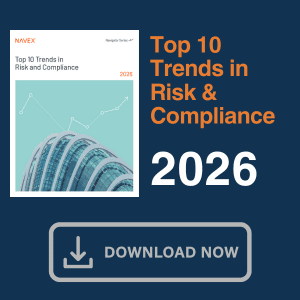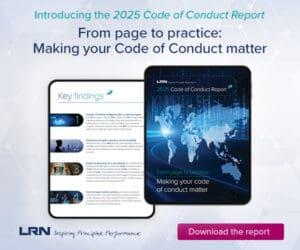Accessibility is becoming an increasingly complex and important corporate function, so much so that in many organizations, a new executive-level role has emerged: the chief accessibility officer. Jonathan Avila, the chief accessibility officer at Level Access, digs into the trend.
A decade ago, the chief digital officer (CDO) role was rare. Today, it’s a standard C-suite position. Now, enterprises are seeing the emergence of another critical function: the chief accessibility officer (CAO).
For major enterprises, digital accessibility has become a foundational business priority, one that requires dedicated oversight. As companies increasingly recognize digital accessibility as a core compliance requirement and brand differentiator, the CAO is playing an essential part in risk management and corporate governance strategies.
Companies are formalizing CAO roles and expanding accessibility initiatives across multiple brands and regions. By centralizing accountability under a CAO, enterprises can better navigate complex standards, reduce liability and improve brand reputation and user satisfaction.
The growing importance of accessibility in enterprise strategy
As digital experiences remain integral to daily life, ensuring they are usable for all is not optional. Organizations that neglect to prioritize accessibility risk legal scrutiny, financial losses and reputational harm.
In the US, Title III of the Americans with Disabilities Act (ADA) requires accessibility in “places of public accommodation,” a broad category that courts have widely interpreted to include websites. Title III web accessibility lawsuits have surged over the past decade, with nearly 17,000 lawsuits filed in federal court from 2017 to 2023.
Additionally, a new rule under Title II of the ADA establishes specific technical accessibility requirements for digital content produced by state, local and district government entities. This rule extends to third-party tools used by public-sector organizations, meaning vendors must conform to requirements or risk losing contracts.
International regulations are tightening as well. The European Accessibility Act (EAA), enforcement of which began at the end of June, mandates accessibility for many consumer products and services offered within the EU, including e-commerce and banking. Businesses that don’t comply could face steep fines and sanctions.
But compliance isn’t the only driver. More than 1 billion people worldwide live with a disability, representing over $18 trillion in collective spending power. Organizations that prioritize accessibility see improvements in usability, customer satisfaction and brand loyalty. This includes the B2B and B2G sectors, as buyers are increasingly requiring vendors to provide documentation of accessibility during the procurement process. RFPs now frequently mandate accessibility conformance reports (e.g., VPATs), turning accessibility into a competitive differentiator.
The emergence of the chief accessibility officer (CAO) role
These rising demands and expectations around accessibility have made executive leadership a necessity. Digital accessibility has become a cross-functional priority, requiring more than part-time attention from legal or IT departments.
By formalizing a CAO role, enterprises create centralized accountability and a leadership structure capable of driving change across the organization. CAOs work closely with chief digital officers and chief technology officers to embed accessibility into the product lifecycle, not just audit for it after the fact. This “shift-left” approach allows companies to identify and fix barriers early, reducing remediation costs and compliance risk.
Beyond design and development, CAOs engage with legal and compliance teams to support proactive governance. They oversee long-term planning, such as multi-year accessibility strategies required by government standards.
Internally, CAOs help build more inclusive workplaces by facilitating the procurement of accessible tools and technologies, partnering with HR teams to support employees with disabilities and sponsoring employee resource groups (ERGs). Many also engage with global standards bodies, such as the World Wide Web Consortium (W3C), helping shape digital accessibility standards as technology advances.
There’s no single path to becoming a CAO. Some leaders are promoted internally, while others bring deep accessibility expertise from external organizations. Many CAOs have hands-on experience with accessibility audits, remediation and inclusive design practices, skills that are critical in guiding enterprise-wide strategy.
Early Cases Shape New Era in Workplace Pregnancy Accommodation
From delayed breaks to denied transfers, missteps can carry hefty penalties
Read moreDetailsHow enterprises are scaling accessibility across multiple brands
As enterprise organizations expand their reach across multiple brands, platforms and markets, scaling accessibility becomes both more complex and more essential. This is where the chief accessibility officer’s impact is most visible. By leading with a centralized governance model, the CAO ensures that accessibility standards are consistent, even across fragmented teams and brand portfolios.
Rather than relying on ad-hoc efforts, enterprises are building structured systems with clear accountability, supported by embedded accessibility champions within design, development and compliance teams.
But successful scalability isn’t just about structure. It also requires action and strategic steps that organizations can take to operationalize accessibility leadership and embed it into every layer of the business.
The first of these is formalizing accessibility leadership and accountability. Whether through a newly appointed CAO or by integrating accessibility responsibilities into an existing executive role, having a dedicated leader is key. This person sets the vision and is empowered to work across departments, establish key performance indicators and define reporting structures. They help ensure accessibility is reflected in job descriptions, procurement requirements and internal training. Often, they also manage third-party vendors to support implementation efforts across different business units.
Next is assessing the current state of accessibility. Organizations must take stock of their digital ecosystem, including everything from public-facing websites and apps to internal systems, to identify accessibility gaps and risks. This audit process is most effective when it goes beyond surface-level scans. By involving people with disabilities to provide direct user feedback, companies can uncover usability challenges that tools alone might miss.
From there, monitoring and compliance strategies must be scalable. Automated accessibility testing tools allow teams to cover ground quickly and identify common issues early. However, manual evaluations remain critical for catching more nuanced or contextual problems. A hybrid approach that blends automation with expert review helps maintain a high standard of accessibility while managing enterprise complexity.
Integrating accessibility into digital development and design is another foundational step. This means adopting a shift-left approach and embedding accessibility considerations from the earliest stages of product planning. Training development, design and product teams in inclusive design principles ensures accessibility is baked in and not bolted on.
Finally, fostering a company-wide culture of accessibility is essential for long-term success. The CAO often plays a central role in promoting accessibility education and awareness across departments. Whether through formal training programs, internal champions or support for ERGs, this culture-building work ensures that accessibility isn’t siloed; it’s a shared priority.
Together, these strategies create a framework for sustainable accessibility at scale. And in organizations where they’re put into practice, they do more than meet compliance. They elevate how teams design, build and deliver inclusive digital experiences.
The future of the chief accessibility officer & digital accessibility
Just as the roles of chief digital officer and chief marketing officer evolved to meet the demands of an increasingly connected world, the chief accessibility officer is now becoming a central figure in the next wave of digital transformation. What was once viewed as a niche or compliance-focused role is now reshaping how enterprises think about innovation, product development, and inclusive design.
Digital experiences are embedded in nearly every aspect of daily life. From smartphones and laptops to apps, websites and even vehicle dashboards, people interact with technology constantly. As artificial intelligence (AI) and other emerging technologies accelerate the complexity of these experiences, the role of the CAO becomes even more critical. Someone must ensure that innovation remains inclusive and that new tools and interfaces are designed for everyone.
In the decade ahead, the CAO’s influence will only continue to grow. Accessibility will become a standard consideration in AI-driven products, and innovation teams will work more closely with accessibility leaders to build experiences that serve a broader and more diverse audience. Their leadership will ensure accessibility evolves in step with innovation, helping enterprises differentiate and deliver digital equity at scale. The question for today’s executive teams is no longer if accessibility leadership is needed but when and how it will be implemented.




 Jonathan Avila, CPWA, is chief accessibility officer of Level Access, a provider of digital accessibility software and support.
Jonathan Avila, CPWA, is chief accessibility officer of Level Access, a provider of digital accessibility software and support. 






